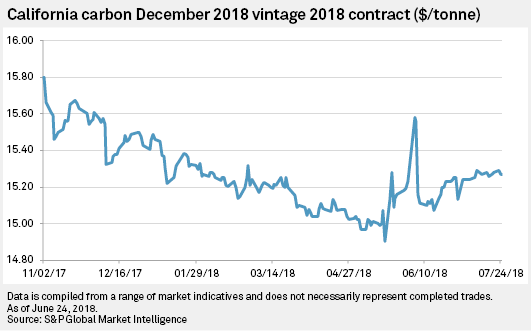Discount allowed and discount received

The entry to record the receipt of cash from the customer is a debit of $950 to the cash account, a debit of $50 to the sales discount contra revenue account, and a $1,000 credit to the accounts receivable account. Thus, the net effect of the transaction is to reduce the amount of gross sales. If you’re new to accounting, you may wonder how to record discounts allowed. Cash discounts will go under Debit in the Profit and Loss account.
The discount allowed journal entry will be treated as an expense, and it’s not accounted for as a deduction from total sales revenue. Sales discounts are also known as cash discounts or early payment discounts. Sales discounts (along with sales returns and allowances) are deducted from gross sales to arrive at the company’s net sales. Hence, the general ledger account Sales Discounts is a contra revenue account.
A second entry must also be made debiting inventory to put the returned items back. The same debit and credit entries are made when allowances are granted to customers for defective merchandise that the customer keeps. When the seller allows a discount, this is recorded as a reduction of revenues, and is typically a debit to a contra revenue account. For example, the seller allows a $50 discount from the billed price of $1,000 in services that it has provided to a customer.
With the cash accounting method, gross sales are only the sales which you have received payment. If you your company uses the accrual accounting method, gross sales include all your cash and credit sales.
How do you calculate sales allowance?
A sales allowance is a reduction in the price charged by a seller, due to a problem with the sold product or service, such as a quality problem, a short shipment, or an incorrect price. Thus, the sales allowance is created after the initial billing to the buyer, but before the buyer pays the seller.
Instead, it would only record revenue in the amount invoiced to the customer. Let’s assume that a company offers a cash discount and it is printed on its sales invoices as 1/10, net 30. Let’s also assume that a sales invoice is for $1,000 and the buyer has been authorized to return $100 of goods.
If the number of discounts taken by customers are few and the impact of these discounts on reported sales results are minimal, then the accounting treatment just noted is acceptable. This scenario does not pass the standard set by the matching principle, where all revenues and expenses associated with a transaction should be recognized within the same period. The seller would not record a trade discount in its accounting records.
The net sales figure on an income statement shows how much revenue remains from gross sales when sales discounts, returns and allowances are subtracted. There are two primary types of discounts that might occur in your small business — trade discounts and cash discounts.
Except for trade discounts — which are not recorded in the financial statements, these discounts appear as a credit on the income statement in the Profit and Loss Account. Basically, the cash discount received journal entry is a credit entry because it represents a reduction in expenses. The exceptions to this rule are the accounts Sales Returns, Sales Allowances, and Sales Discounts—these accounts have debit balances because they are reductions to sales. Accounts with balances that are the opposite of the normal balance are called contra accounts; hence contra revenue accounts will have debit balances. Revenues and gains are recorded in accounts such as Sales, Service Revenues, Interest Revenues (or Interest Income), and Gain on Sale of Assets.

While you don’t lose physical cash, you do lose the sale amount. Whenever cash is received, the asset account Cash is debited and another account will need to be credited.
Since the service was performed at the same time as the cash was received, the revenue account Service Revenues is credited, thus increasing its account balance. This credit memorandum becomes the source document for a journal entry that increases (debits) the sales returns and allowances account and decreases (credits) accounts receivable.
The sales returns and allowances account is known as a contra revenue account. When items are returned or allowances granted, it allows management to track the amounts and look for trends. When merchandise is returned, the sales returns and allowances account is debited to reduce sales, and accounts receivable or cash is credited to refund cash or reduce what is owed by the customer.
- When merchandise is returned, the sales returns and allowances account is debited to reduce sales, and accounts receivable or cash is credited to refund cash or reduce what is owed by the customer.
- The sales returns and allowances account is known as a contra revenue account.
Are sales discounts reported as an expense?
A debit increases accounts receivable, which is an asset account. Unlike an asset account, sales revenue is increased by a credit. For example, assume your small business sold $100 in products to a customer who will pay the invoice at a later date. Debit $100 to accounts receivable and credit $100 to the sales revenue account.
Gross sales is the total unadjusted income your business earned during a set time period. This figure includes all cash, credit card, debit card and trade credit sales before deducting sales discounts and the amounts for merchandise discounts and allowances.
How Do You Calculate Net Sales Revenue?
Therefore, the net amount due to the seller within 30 days is $900. However, the buyer may deduct $9 (1% of $900) if the buyer pays the seller $891 within 10 days of the invoice date.
A cash, or sales, discount is one you offer to a customer as an incentive to pay an invoice within a certain time. You must record cash discounts in a separate account in your records and report the amount on your income statement. AccountDebitCreditSales Returns and AllowancesXAccounts ReceivableXThe entries show that as your returns increase, your assets decrease.
AccountingTools
A trade discount occurs when you reduce your sales price for a wholesale customer, such as on a bulk order. This type of discount does not appear in your accounting records or on your financial statements.
What is allowance for sales discounts?
Sales allowances occur when customers agree to keep such merchandise in return for a reduction in the selling price. If Music World returns merchandise worth $100, Music Suppliers, Inc., prepares a credit memorandum to account for the return.
Recording sales returns and allowances in a separate contra‐revenue account allows management to monitor returns and allowances as a percentage of overall sales. High return levels may indicate the presence of serious but correctable problems. The first step in identifying such problems is to carefully monitor sales returns and allowances in a separate, contra‐revenue account. An income statement is a financial statement that reveals how much income your business is making and where it is going.
These accounts normally have credit balances that are increased with a credit entry. In the sales revenue section of an income statement, the sales returns and allowances account is subtracted from sales because these accounts have the opposite effect on net income. Therefore, sales returns and allowances is considered a contra‐revenue account, which normally has a debit balance.
Increase Sales Across the Board
Debit the accounts receivable account in a journal entry in your records by the full invoice amount of a sale before a cash discount. Credit the sales revenue account by the same amount in the same journal entry.